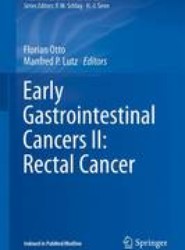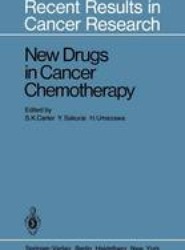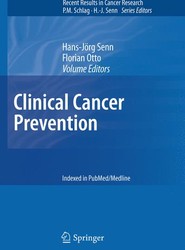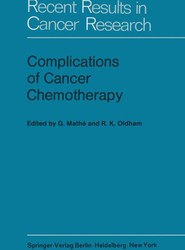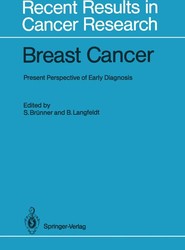(To see other currencies, click on price)
MORE ABOUT THIS BOOK
Main description:
The transformation of a normal cell into a cancer cell is not a sudden but a slow continuous process which may take years. A systematic study of the morphological and structural changes that take place during this cellular transformation has only become possible since methods were developed to induce a high incidence of tumors in experimental animals. The growth of such tumors can be followed during all stages of their development. For several reasons, rat liver has proved to be particularly suitable. For more than thirty years it has been known that one can induce tumors in rat liver experimentally with many different substances. The azo dyes which were used originally (YOSHIDA, 1932; KINOSITA, 1937) have since been replaced by more potent carcinogens. The recently discovered nitrosamines, dimethylnitrosamine (MAGEE and BARNES, 1956), diethylnitrosamine (SCHMAHL et aI. , 1960) and N-nitrosomorpholine (DRUCKREY et aI. , 1961) should be mentioned in this context. Used in the proper dose, these carcinogens lead within a few months to the formation of multicentric hepatomas in practically 100 Ufo of the experimental animals, and are therefore a very useful tool for studies of the cytogenesis of cancer (see BUCHNER, 1961; GRUND MANN, 1961; GRUNDMANN and SIEBURG, 1962; OEHLERT and HARTJE, 1963; BAN NASCH and MULLER, 1964). The liver parenchyma as such offers a very big technical advantage because it consists of a rather homogenous cell population.
Contents:
A. Introduction.- B. Material and Methods.- I. Animal Experiments.- II. Techniques of Light Microscopy.- III. Techniques of Electron Microscopy.- C. Results.- I. The Precancerous Phase.- 1. The Acinuscentral Cytotoxic Pattern.- a) Light Microscopy.- b) Electron Microscopy.- 2. The Acinusperipheral Cytotoxic Pattern.- a) Light Microscopy.- b) Electron Microscopy.- II. The Transformation into Hepatomas.- a) Light Microscopy.- b) Electron Microscopy.- D. Discussion.- I. Dose-dependence and Significance of the Acinuscentral and the Acinusperipheral Cytotoxic Pattern.- 1. Acinuscentral Cytotoxic Pattern.- 2. Acinusperipheral Cytotoxic Pattern.- II. The Fate of the Individual Cytoplasmic Componente during Carcinogenesis.- 1. The Mitochondria.- 2. Glycogen.- 3. The Granular Endoplasmic Reticulum (Ergastoplasm).- 4. The Agranular Endoplasmic Reticulum.- III. The Transformation of Glycogen Storage Cells into Hepatoma Cells.- E. Summary.- References.
PRODUCT DETAILS
Publisher: Springer (Springer-Verlag Berlin and Heidelberg GmbH & Co. K)
Publication date: March, 2012
Pages: 122
Weight: 222g
Availability: Not available (reason unspecified)
Subcategories: General Practice, Hepatology, Oncology
From the same series
Friedhelm Raue
Thomas Ried
Christian Wittekind
Florian Otto
Markus W. Buchler
C. Stroszczynski
Manfred Dietel
H.-J. Senn
Otmar Schober
Jean-Nicolas Vauthey
Elmar Detering
Richard P. Baum
G. Mathe
R. Gross
Florian Otto
Uwe M. Martens
Michail Ignatiadis
Georges Mathe
M. S. Griem
Jack Cuzick
Michael Gnant
Ute Goerling
Hans-Jorg Senn
Werner H. Kirsten
F.A. Langley
Kuan-Teh Jeang
Janusz Jankowski
J. Bernard
Thomas Moehler
Andrea Tannapfel
S.K. Carter
R. S. Nelson
Kerry S. Courneya
Rolf D. Issels
Hans-Jorg Senn
Florian Otto
W. Fischbach
Umberto Veronesi
Otmar Schober
Paul M. Schneider
Hans-Jorg Senn
Wolfgang Tilgen
Jean-Nicolas Vauthey
Richard P. Baum
J. L. Hayward
W. H. Kirsten
Henry T. Lynch
Georges Mathe
G. T. Pack
Leon Goldman
Charles G. Moertel
R.G. Freeman
L. Manuila
Agnes Glaus
Rudiger Liersch
Richard Schindler
Uwe M. Martens
W.A. Fuchs
Michail Ignatiadis
Edward S. Meek
P. Roy-Burman
Merle Mizell
Jean Lindenmann
Pavel Koldovsky
Enrico Anglesio
Georges Mathe
Hans-Jorg Senn
James H. Goldie
Donald Metcalf
Siegfried Seeber
Israel Penn
B. Sokoloff
Manfred Schwab
E. Grundmann
H.-D. Pape
Robert S. Nelson
G. Mathe
J. Lange
G. Bonadonna
J. Szymendera
H. B. Marsden
K. E. Stanley
E. Grundmann
C. Bohuon
Pierre Denoix
A. C. Templeton
Ekkehard Grundmann
Michael Wannenmacher
Ivan Damjanov
Wolf-Dieter Ludwig
Friedhelm Raue
M. L. Jacobs
H.K. Muller-Hermelink
Rita Engenhart-Cabillic
E. Grundmann
Peter M Schlag
E. Grundmann
Ekkehard Grundmann
G. Mathe
Donald Metcalf
S. Brunner
F. F. Holmes
G. Mathe
G. Mathe
Pierre Band
Stephen C. Schimpff
K. Schwemmle
Michael Gnant
K. Hoffken
Friedhelm Raue
H. R. Scheurlen
Aron Goldhirsch
H. Acker
Hans-Jorg Senn
F. G. J. Hayhoe
William Duncan
E. Thiel
Hans-Jorg Senn
K. Musshoff
Hans-Jorg Senn
A. Rossi-Fanelli
Peo C. Koller
Volker Diehl
K. Hoffken
H.-J. Senn
Bruce S. Schoenberg
G. St. Arneault
S.K. Carter
B. Henningsen
J. Hekmatpanah
G. Mathe
E. Grundmann
Hans-Jorg Senn
G. Mathe
Sam Brunner
Hans-Jorg Senn
V. Hofmann
Michael Wannenmacher
G. Wagner
Hans-Jorg Senn
Rudolf Pichlmayr
Frank M. Torti
Michael Wannenmacher
William Duncan
G. Mathe
M. Bamberg
H.-P. Lohrmann
E. Grundmann
Niels Neymark
Peter M Schlag
P. Koldovsky
G. Nass
W. Duncan
Ekkehard Grundmann
Richard P. Gallagher
Hans-Jorg Senn
W. Duncan
W. Duncan
S.K. Carter
Michael Molls
Sam Brunner
Peter Boyle
Maurizio Ponz de Leon
U. Reinhold
Gunter Burg
K. Hoffken
H.-J. Senn
F.W. Schildberg
Beat Thurlimann
Janusz Jankowski
Thomas Moehler
Andrea Tannapfel
Kerry S. Courneya
H.-J. Senn
Per-Ulf Tunn
Andreas von Deimling
Antonella Surbone
Ursula Kapp
Hans-Jorg Senn
Santiago Gonzalez-Moreno
Hanno Riess
Paul M. Schneider
Uwe M. Martens
Rudiger Liersch
Renzo Brun del Re
Andreas von Deimling
Ursula Kapp
Per-Ulf Tunn
Hanno Riess
Antonella Surbone
Manfred Dietel
Santiago Gonzalez-Moreno
Louis Denis
H.-J. Senn
C. Stroszczynski

















